The UK’s Tax and Welfare Balancing Act
How Rising Dependency Ratios Are Reshaping Tax and Welfare Systems
Stepping away from my usual topics, I want to dig into a growing concern: rising UK taxes with seemingly declining public services.
I live in the UK, where taxes have been steadily rising over the past few years, yet the public services these taxes are meant to support seem to be deteriorating. New schools, hospitals, roads, or infrastructure projects are scarce, and the quality of social services doesn’t seem to be improving either. It doesn’t help that every upcoming fiscal event (with one coming next week) results in feverish speculation and general trepidation.
At first, I followed the standard suspicion of - “too many people are on welfare and abuse the system”. Partly to validate it and partly to challenge myself, I dug in to understand where government spending has actually gone, I analyzed Total Managed Expenditure (TME) over a 20-year period from 2002-03 to 2022-231:
Social Security (including Pensions and benefits) increased from £193.2Bn to £258.7Bn (1.49% annual growth).
Adult Social Care rose from £20.1Bn to £28.1Bn (1.75% annual growth).
Education, Defence, Public Order & Safety, Transport, and Housing & Community Amenities combined grew from £202.3Bn to £266.3Bn (1.41% annual growth).
Health (NHS) saw the largest increase, from £106.0Bn to £211.6Bn (3.52% annual growth).
Interest payments on Government Borrowings climbed from £82.5Bn in 2002-03 to £105.9Bn in 2018-19, then surged to £225.6Bn in just four years (4.87% annualized growth over 20 years).
Day-to-day public services spending grew from £472Bn to £746Bn (2.32% annual growth).
With the exception of interest payments and healthcare, most expenditures haven’t grown dramatically. Yet, public services feel stretched thinner than ever. What gives?
The Growing Burden of Interest and Health Costs
Interest payments are concerning. In fact, in general the UK debt levels are concerning. Government debt was just ~40% of GDP in 2002-03; today, it exceeds 100% of GDP. Debt must be repaid eventually, but in the meantime, its servicing cost is an ever-growing drain on public funds. This also means that the tax-to-GDP numbers that we see rising, only tells us partially reality. We are also borrowing a lot that will need to be paid out in the future years.
The other major head - healthcare costs - have risen globally, driven by longer life expectancy, earlier disease detection, and better treatments. These advances, while invaluable, come with ever-increasing financial demands.
With rising costs across the board, it’s natural to question whether inefficiencies—such as fraud—are making things worse.
Fraud, and the Welfare System in General
The welfare system and social investment in this country is quite widespread, starting from health, adult social care, housing benefits, council benefits, universal credit, expenditures on education, and pension. The UK’s 'cradle to grave' welfare system is expensive—not just in direct payouts, but also in administration and execution.
Most nations that get wealthy will partake in some base level investments, like education, but the nuances of the rest of welfare system are largely country and policy specific - for instance, the idea of having State Pensions, on top of a generally well administered employment based pension system, is specific to the UK and it costs a lot of money.
For the sake of this discussion, if I were to exclude Education, then the rest of the welfare system costs us about £516Bn or ~20% of the GDP. That’s a lot of money.
Of this, fraud of the welfare system accounts for about ~£30Bn2 - about 6% of the expenditures. While £30Bn is an astounding large number in isolation, and definitely supersedes a lot of the fiscal blackholes and tax raising initiatives in recent years, a 6% leakage, where put into perspective, is not that bad. There is also little evidence in the data that fraud has been expanding, but I am happy to be challenged here.
Fraud exists, and £30Bn is a significant figure. However, the core problem is not fraud—it’s the overall system size and its unsustainable trajectory.
The Role of the Dependency Ratio
Beyond raw borrowing & spending numbers, there’s another crucial factor: the dependency ratio, which measures the number of non-working adults per working adult. When the UK's welfare state was established (1945-48), the dependency ratio was below 17.5%. Today, it has nearly doubled3. In fact even the number beyond is likely an understatement, as other estimates put it at close to 57%, which essentially means that this has quadrupled in the past 2 generations.
To me, this demographic shift seems like the real reason why public spending feels increasingly burdensome. Even if inflation-adjusted welfare costs stay steady, fewer working-age people are paying for them—causing per-capita tax burdens to rise.
This is not a uniquely British problem. The same pattern—rising dependency ratios affecting tax-to-GDP ratios—is being felt across the developed world, including the EU14 and G7 nations4. The UK is hardly an outlier. Most developed economies are grappling with an aging population, increasing healthcare costs, and a shrinking base of working-age taxpayers to support these expenses. While the UK has its own political and economic idiosyncrasies, the underlying demographic and fiscal trends are remarkably similar across these countries.
Essentially a system that was designed to be paid for to a small recipient base paid for a large contributory base, has slowly skewing towards a larger recipient base, and a smaller contributory base.
To summarise, we have an increasing cost base, a shrinking revenue base, and a tonne of debt on the balance sheet. If this were a company’s financial statement, it would read very grim. And yet, this is the reality of where we stand.
What Can Be Done?
A Sovereign Wealth Fund (Too Late for the UK?)
Countries like Singapore and Norway have built sovereign wealth funds, investing surplus revenues in high-growth assets to support future spending. Had the UK done the same during its economic boom years, today’s burden could have been mitigated. But with tight finances, starting now is nearly impossible.Technology & Productivity Gains (A Hopeful but Uncertain Path)
If technological advancements can increase worker productivity and reduce public service costs, they could help offset demographic pressures. However, this remains largely speculative and incremental at best.Efficiency & Process Improvements (Incremental, but Limited Impact)
The UK’s public sector could be more efficient, but structural inefficiencies are deeply embedded. While small yearly improvements (e.g., the Chancellor’s 2% efficiency target for departments) might help, they won’t fundamentally change the trajectory.Immigration (Politically Contentious & Logistically Challenging)
Increasing the working-age population via immigration would help, but two major hurdles exist:Public Sentiment: Brexit demonstrated strong resistance to immigration, even from culturally similar European countries. Expanding it to Africa or Asia seems politically unfeasible.
Infrastructure Constraints: The UK already struggles to keep up with existing population growth. Expanding infrastructure to accommodate large-scale immigration appears unlikely.
There is the other option of borrowing to meet the demand, thereby increasing debt levels, but as we saw with the LDI scare and the general gilt run-ups, that has significant consequences too, and Governments are now getting scared of entertaining too much of that option, which is why chancellors across the aisle are imposing fiscal rules upon themselves.
The Hard Reality: Taxes Up, Services Down
If none of the above solutions fully address the issue, the cold mathematical reality remains: taxes must rise, services must shrink, or both.
Raising Taxes: There’s a limit to how much the government can extract before hitting the Laffer Curve, where higher taxes reduce overall revenue. But taxation remains the politically "easier" choice, so governments will keep testing how much more they can take.
Cutting Welfare & Services: Eventually, the welfare system will have to be streamlined. This won’t happen overnight, but reforms are inevitable.
Political Realities & Voter Choices
This issue transcends party lines. No major UK political party advocates eliminating welfare, significantly raising taxes, or opening the floodgates to immigration5. Instead, they tweak policies at the margins, hoping incremental changes will be enough.
As a voter, instead of reacting emotionally to these triggers, our best bet is to support leaders who can tinker with the system more competently than others, and one must debate who can do that better, but ideologically the major parties aren’t deviating much from the script. Nevertheless, the underlying economic trajectory isn’t going to improve dramatically anytime soon.
Final Thoughts: What This Means for Individuals
Looking at this dispassionately, a few lessons emerge:
Higher taxes are inevitable. If you’re a well-earning individual, expect continued fiscal pressure. No tax break is sacrosanct—ISAs, pensions, capital gains—nothing is off-limits.
Public services will decline. The NHS may become even more strained, pension policies may be restructured, and social safety nets will likely be trimmed. Whatever you assume is guaranteed should be reassessed.
Adapt or Reconsider. If you don’t like where this is heading, re-evaluate your financial and career choices - by this I mean, decide if you want to live here or move.
For me, despite the challenges, I’m staying put. As an immigrant from a country experiencing rapid economic growth but with its own idiosyncrasies and pitfalls, I see value in the UK’s institutions and society—even if its economic future is uncertain. I’ll continue contributing my taxes, my analytical perspective, and my voice to these discussions.
While this isn't strictly an investing post, these macroeconomic realities will shape investment opportunities—and personal financial decisions—in the years ahead. Let’s just say the mantra I am advocating is “Expect the best, prepare for the worst.”
I’d love to hear your perspectives—especially from those who’ve lived through similar shifts in other countries. How do you see this playing out?
I downloaded the raw Spending Composition Sheet and played around with it.
Source - https://assets.publishing.service.gov.uk/media/6285e7b9d3bf7f1f46f9b6a4/fighting-fraud-in-the-welfare-system-print.pdf
Source - https://fred.stlouisfed.org/series/SPPOPDPNDOLGBR
Source https://obr.uk/box/the-uks-tax-burden-in-historical-and-international-context/
I say major political party, but Reform Party is gaining a lot of credence, because they seem to be promising the idea of attacking this imbalance, and that’s why they are appealing to a wider range of voter base today, than ever before. I am not going to recommend a political stance here, but it is clear that the major parties would need to learn some lessons from the Reform’s agenda attack - they will be better served by listening to some of those arguments than just refuting them.


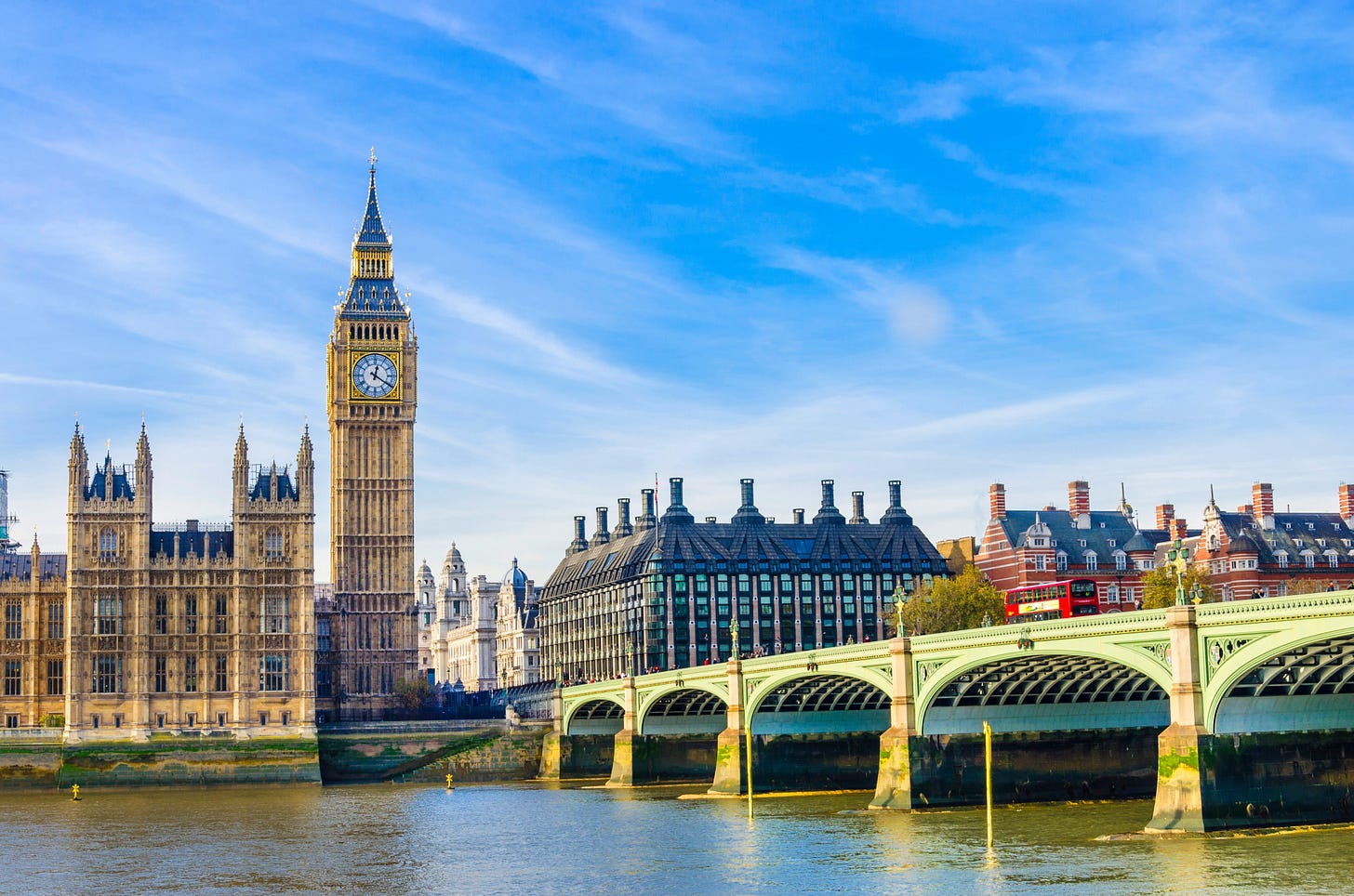
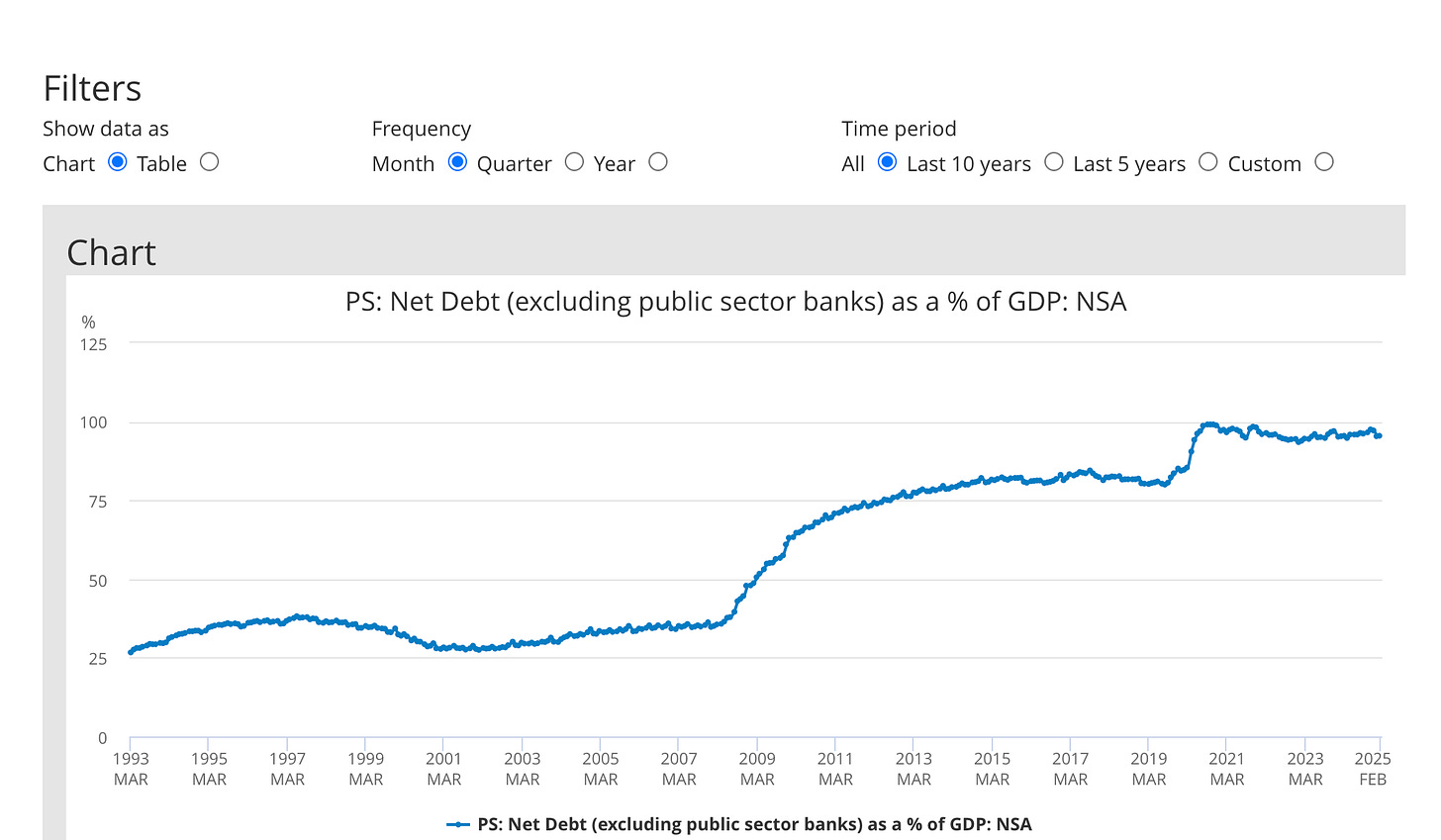
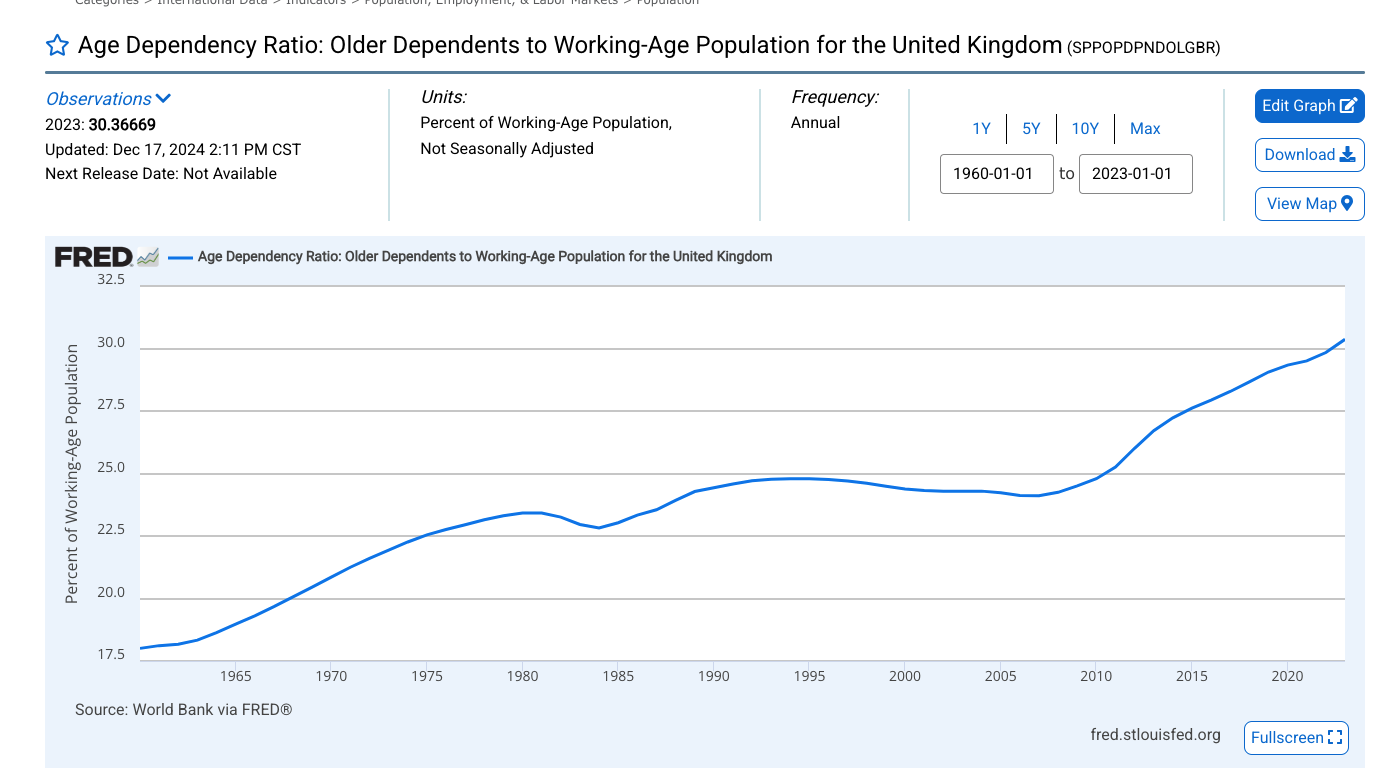
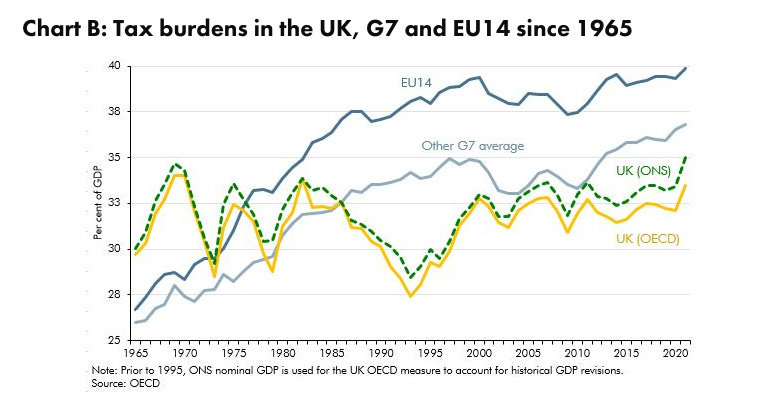
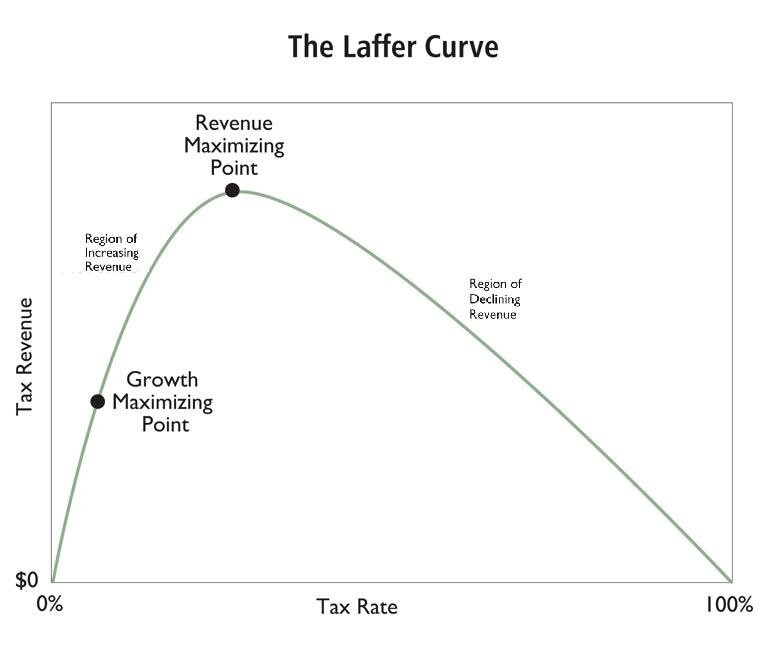
Fantastic data-dive and analysis. Perhaps DOGE and its computer brainiacs can come over and do some digging around. I’d bet dollars to donuts there’s some crazy expenditures that neither side of government could approve of or support in the disinfecting glare of broad daylight.